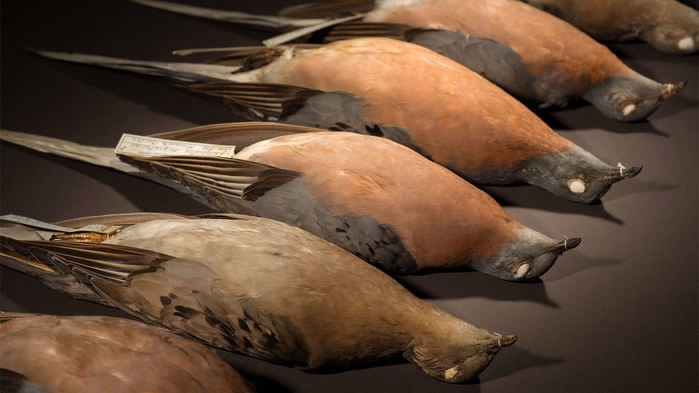
Animal
11:00, 17-Nov-2017
Passenger pigeons, now extinct, needed big flocks to survive

Passenger pigeons were once so plentiful they could darken the daytime sky when they flew over North America, but oddly, their abundance may have played a role in their extinction, researchers said Thursday.
Though it may seem counter-intuitive, the pigeons (Ectopistes migratorius), evolved quickly and in the process, lost certain traits that might have been useful for surviving in smaller groups, said the study in the journal Science.
The findings have implications for other creatures threatened by swift changes in the world around them.
"Our results suggest that even species with large and stable population sizes can be at risk of extinction after a sudden environmental change," said the study led by Beth Shapiro, a professor at the University of California, Santa Cruz.
Numbering three to five billion before they began to decline in the 1800s due to a surge in hunting, these social birds were once "the most abundant bird in North America, and possibly the world," said the report.

DNA from passenger pigeon museum specimens provided key new insights into this species’s demise. /Photo via Bailey Library and Archives, Denver Museum of Nature & Science
DNA from passenger pigeon museum specimens provided key new insights into this species’s demise. /Photo via Bailey Library and Archives, Denver Museum of Nature & Science
And although large populations of animals tend to be genetically quite diverse, researchers were stunned by their analysis of four extinct pigeon genomes, which were compared to two modern carrier pigeons.
They found that passenger pigeon diversity was "surprisingly low," said the study.
The last passenger pigeon died in a US zoo in 1914. Until now, the prevailing theory was the birds went extinct due to a booming commercial hunting industry that forced their populations to become demographically isolated, leading to lots of inbreeding, lower genetic diversity and weaker health.
But the latest findings suggest the reason was more complex. The birds evolved quickly and may have adapted to large social groups, hunting and breeding together.
Flying in gargantuan masses, their sheer size protected them against predators. But in smaller groups, the theory goes, these defenses fell short, leading the birds' relatively quick die-off in the matter of a few decades.
"Passenger pigeons may have evolved traits that were adaptive when their population was large but that made it more difficult for them to survive after their population was diminished by the commercial harvest," said the report.
Source(s): AFP

SITEMAP
Copyright © 2018 CGTN. Beijing ICP prepared NO.16065310-3
Copyright © 2018 CGTN. Beijing ICP prepared NO.16065310-3